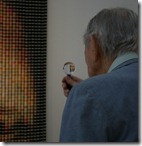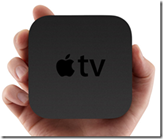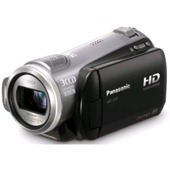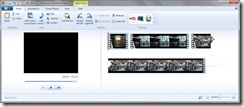2011 Predictions
 2010 was an excellent year in tech. Windows 7 became the first widely-adopted OS in 9 years by Microsoft, Apple shook up intermediate computing by introducing a large version of a current product, Microsoft introduced the first device-free controller in Kinect, eBook readers finally gained traction, Android operating system exploded, Microsoft released a strong OS for phones, 3D TVs hit the shelves, Google TV and Apple TV launched, and much, much more. Here’s a look at what will happen from 2011
2010 was an excellent year in tech. Windows 7 became the first widely-adopted OS in 9 years by Microsoft, Apple shook up intermediate computing by introducing a large version of a current product, Microsoft introduced the first device-free controller in Kinect, eBook readers finally gained traction, Android operating system exploded, Microsoft released a strong OS for phones, 3D TVs hit the shelves, Google TV and Apple TV launched, and much, much more. Here’s a look at what will happen from 2011
- Apple will unveil the iPad2 and it will be an enormous success. It will include a front-facing camera with FaceTime as well as a higher resolution screen, period. Apple doesn’t need to add any more features than that for the device to continue its domination. In fact, in the face of a slew of tablets at the same price point, sales of the iPad2 will actually increase based on the maturity of the ecosystem.
- Apple’s next foray with iBooks will be an aggressive move to adopt textbooks.
- Seeing the impressive Ford Sync system, Lexus/Toyota and BMW will join Google or Apple to create an automobile integration system that leverages one’s iOS or Android phone to deliver content beyond A2DP Bluetooth audio to the car’s system. Key selling points will be navigation and Pandora.
- Nintendo will release a controller-based, HD game console that will play legacy games. In early 2012 they will announce a Kinect-like sensor for the system.
- Microsoft will still have a phenomenal set of components but still will not connect the dots. Their home DVR, cell phone, Zune subscription, XBox360, Kinect, and Ford Sync systems are all incredible products. Add an inexpensive home automation system and allow all of these parts to talk to each other, and you have a killer lifestyle ecosystem. Unfortunately they will still be tripping over details of the trees instead of selling people on the forest.
- Yahoo will merge with someone like Time Warner, AOL, or Viacom.
- Barnes & Noble and Borders will close 25% of their brick & mortar stores.
- Blockbuster Video will dissolve, but their assets will be purchased by independent, local merchants in vacation destinations.
- Fuel prices will inhibit the economy so much that many new, innovative products this year will not get off of the ground.
- Apple’s device division will have an outstanding year, but adoption of OSX will still be slow.
- There will be no more upgrades with cable companies’ rented hardware. Time Warner Cable will introduce a cloud DVR service that allows fast forwarding, but is so inaccurate that it cannot be used to skip commercials. Hollywood lawyers will require that the shows be set to record up to the episode’s actual presentation time (they will not allow TWC to record 1 instance of our local “Modern Familyâ€, for example, and apply it to subscriber’s accounts as requested. They will require TWC to have one instance per request of that episode on their servers). Subscribers will not be able to request recording of a show the following day, as this constitutes “on-demand†viewing, and is a different legal entity.
- Time Warner will work with local outlets to carry online access through cable boxes to streams that currently exist on the internet. Local news streams, for example, will be provided in a crappy, slow 10-foot interface.
- Prices for sheet-fed document scanners will fall, enabling people to easily scan documents and sent them to mobile devices.
- Apple will release an iPhone on Verizon in March along with the release of the iPad2.
- Terrestrial radio stations will begin showing a noticeable weakening. XM will be in real trouble in Q4.
- No improvements will be made with the BCS bowl system.
- No significant improvements will be made regarding the quality of content available to stream from TV devices. (ie. “cutting†the cord – from cable systems – will still not be a viable option).
- Social networking specific to food and music will be big trends this year.
- Environmentalists will protest the ritual of putting up a natural Christmas tree.
- Violence will break out regarding the actions of the World Bank.
- Serious discussions will take place regarding dissolution of the ACC Basketball Tournament.
- Indian food will make its first step toward being America’s next food fad.
- City officials will discuss separate disposal of styrofoams and certain plastics to landfills.
- Mobile HDTV units will become ubiquitous, but will be poorly adopted by the market.
- An Android tablet will have a dock that allows the tablet to be used as a computer monitor. The tablet’s document system will be available as a drive to the computer’s operating system.
- A very big, new rock band we’ve never heard of will emerge.
- Tablet computers (and their ability to offer a paperless questionnaire) will be the final step in getting medical practices completely paperless. It will be a 5-year process, but there will be a significant adoption rate in 2011.
So there it is. It could be complete rubbish, could be mostly true. I don’t care. Just one man’s thoughts!


![navigation-system[1] navigation-system[1]](http://www.blog.danamccall.com/wp-content/uploads/2010/04/navigationsystem1-thumb.jpg)




